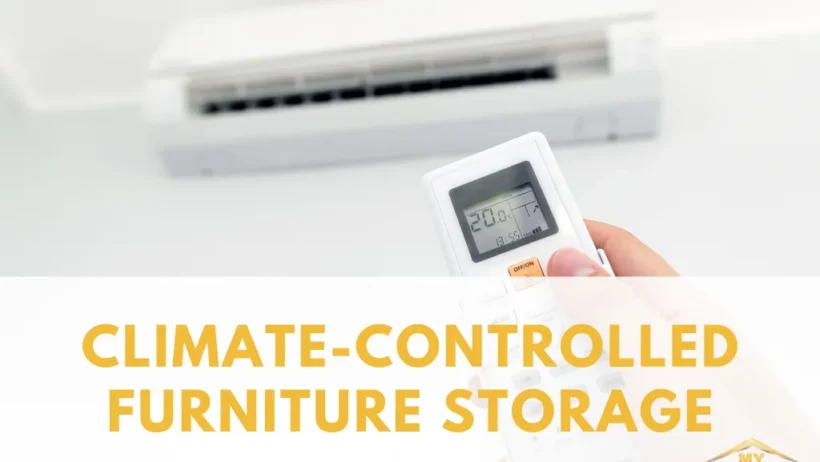When the season changes, the foliage turns from green to splashes of amber and crimson, and the world outside looks inviting. Yet, as a homeowner, you may find yourself needing to tuck away your cherished furniture in a safe sanctuary. Climate-controlled storage offers a reprieve from the whims of Mother Nature, ensuring that your belongings retain their integrity and beauty for years to come. However, the art of packing furniture for such a haven deserves meticulous attention. Here’s how to prepare your pieces for their temporary cocoon.
Understanding the environment is crucial. In a climate-controlled storage unit, consistent temperature and humidity levels create an ideal atmosphere. Yet, if not prepared properly, your furniture could succumb to the perils of exposure during transit or handling. The process of packing should be akin to an artist preparing a canvas; every stroke must be deliberate, and every material should serve a purpose in protection. Let’s explore the intricate steps involved in this endeavor.
Enveloping Your Belongings: The Power of Proper Materials
As you embark on this packing journey, consider your materials as the armor for your beloved furniture. The right packaging materials can make all the difference in preserving the aesthetics and functionality of your items. Begin with the simple yet versatile bubble wrap; it is your first line of defense against any impact. Carefully wrap each piece of furniture, ensuring that the corners are given special attention, as they are often the most vulnerable to bumps during transport.
Next, move on to furniture pads or moving blankets. These padded layers provide an excellent buffer against scratches and dents. As you cocoon your furniture in these protective layers, think of it as wrapping a precious gem in velvet. For delicate wooden pieces, consider acid-free paper to prevent any chemical interactions that could lead to discoloration or damage over time.
Utilize sturdy boxes for smaller items, ensuring that they are appropriately sized. Mismatched boxes can lead to unstable stacking, which might result in crushed belongings. For items like lampshades or delicate accents, custom boxes can offer a personalized touch, safeguarding them against wear and tear.
Disassembling: The Art of Compactness
Moving large furniture pieces can feel overwhelming, but it can be managed with the right technique. Disassembling items such as bed frames, tables, or large cabinets can significantly reduce the amount of space they occupy. This process is akin to unwinding a tangled ball of yarn; it requires patience but results in a more orderly structure for transport.
Always start with the items that can be easily taken apart. Keep track of screws, bolts, and other small components by placing them in labeled zip-top bags. Attach these bags securely to the corresponding furniture piece to avoid a scavenger hunt during reassembly. In this manner, you protect not only the furniture but also your sanity upon retrieval.
For items that cannot be disassembled, there are still ways to improve their compactness. Consider using sofa covers or stretch wrap to compress them slightly. This method not only saves space but also provides an additional layer of protection against dust and environmental factors.
Strategic Organization: Maximizing Your Space
Once everything is securely packed, it’s time to consider the organization of your storage unit as if it were a well-choreographed dance. Let your furniture pieces find their designated spots with thoughtfulness and care. Start with the heaviest items at the bottom and layer lighter pieces on top, reminiscent of building blocks. This structure helps to maintain stability and prevents accidental damage during your retrieval process.
Utilize the vertical space available to you. Instead of stacking items haphazardly, aim to store larger pieces against the back wall, while smaller boxes and accessories can fill in around them. This strategic layout allows for ease of access and maximizes the overall efficiency of the space.
Additionally, consider leaving a pathway to important items you may need to access before the entire unit is reopened. This foresight will save time and energy when you need to retrieve certain pieces quickly.
Final Touches: Ensuring Safety and Security
The last step in this meticulous packing process is to ensure that everything is safe and secure. Invest in a high-quality lock for your climate-controlled storage unit—this is your fortress, after all. Reassess the state of your items before leaving; a simple checklist can help confirm that all pieces are accounted for and securely packed.
Furthermore, take an inventory of your belongings. A documented list, complete with photographs, can serve as a reference point, alleviating anxiety about potential loss or damage during their storage period. This journey, when undertaken with meticulous care, ensures that upon opening the door to your storage unit, your furniture will emerge unscathed, much like a butterfly breaking free from a chrysalis.
In conclusion, packing furniture for climate-controlled storage is a thoughtful blend of art and science. Each step, from selecting the right materials to organizing items thoughtfully within the unit, showcases the care that goes into preserving not just furniture, but also memories and sentiments entwined with them. Treat your furniture to a nurturing embrace, allowing them to rest peacefully for as long as needed, emerging ready to serve their purpose once more.






